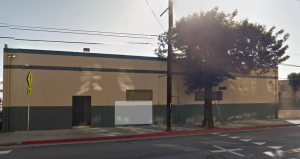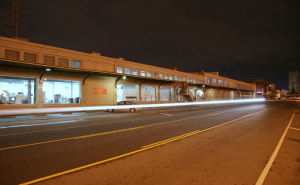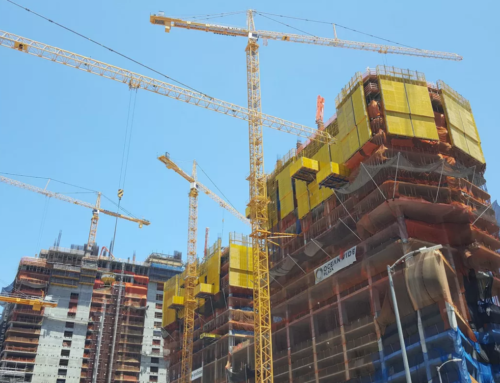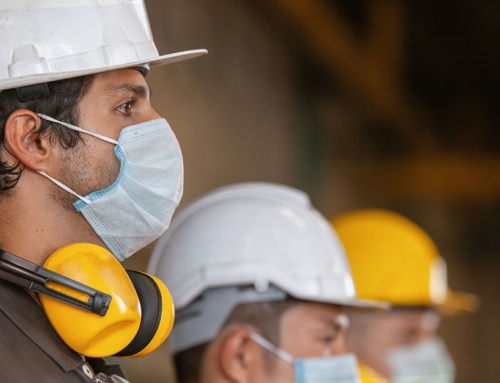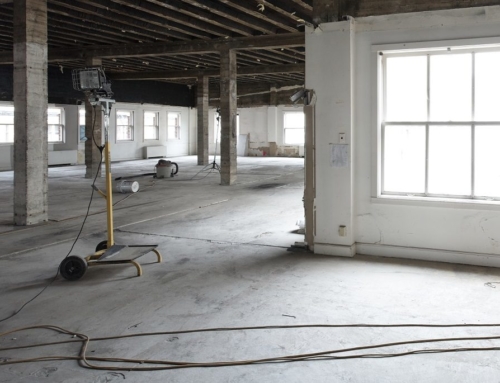The upswing in Los Angeles commercial construction and development is especially noticeable in the once-industrial and gritty LA Arts District where yet another new mixed-use development is planned.
According to Curbed LA, the new 85-foot-tall building is expected to hold about 172 live/work units along with 23,000 square feet of commercial space presumably set aside for retail and a few restaurants or bars. There will also be parking for up to 286 vehicles.
This comes just days after the announcement that Irvine-based developer SunCal plans to build twin 58-story towers in the Arts District just one block away. Other live-work developments by AvalonBay Communities and San Francisco-based Carmel Partners are in the works.
This is a prime location in a very lively block right beside the Biscuit Company Lofts building – the former National Biscuit Company factory converted to a mixed-use development in 2006. This building hosts the industrial-chic gastropub Little Bear and the French bistro Church & State on its ground floor.
LA Arts District Alive with Proposed Developments
The Arts District development boom has been consistently strong for the past decade and shows no signs of slowing down. The area has seen an almost startling transformation since the nineties. Commercial development has included both new construction and the creative adaptive reuse of old warehouses and industrial buildings.
This adaptive reuse project spawned a large new construction project – a quarter-mile long mixed-use development called One Santa Fe designed by Michael Maltzan Architecture (MMA). Designed to fit the look of surrounding historic structures, One Santa Fe hosts residential units, retail stores, offices, and open spaces.
This developent was followed by another adaptive reuse project, the transformation of Coca Cola’s century-old manufacturing plant into the vibrant Fourth & Traction development designed by Hauser Wirth & Schimmel.
Challenges Faced by the Arts District Today
Rising monthly rent is pushing out many longtime artists and tenants. Leaders within the community are seeking a balance. They want to embrace new construction and development but also preserve the Art District’s character and historically significant buildings. They also want to maintain some degree of affordable housing to keep artists from being priced out of the area.
While many people prefer adaptive reuse when possible, 676 South Mateo St. has minimal architectural or historical value. Its demolition shouldn’t face much backlash. It also helps that at least 11 percent of the residential units are expected to be reserved for low-income residents. Expect affordable housing to be a big part of future mixed-use developments in LA.
Curbed LA recently published this nifty map of the proposed Los Angeles commercial construction projects in the Arts District.


